brandi t. summers, ph.d.
professor ∙ researcher ∙ writer
race, urban infrastructure, aesthetics
race, urban infrastructure, aesthetics
⎯⎯Book⎯⎯
Reviews of Black in Place
J.S. Lewis, J. Robinson, A. Reese, M. Ramírez, B. Summers. 2021. “Book Review Symposium - ‘Black in Place: The Spatial Aesthetics of Race in a Post-Chocolate City.’” Antipode
O. Clerge. 2021. “Review of Black in Place: The Spatial Aesthetics of Race in a Post-Chocolate City.” Social Forces
B. Hinger & E. Quinn. 2020. “Black aesthetic emplacement: Thinking beyond neoliberal capitalist explanations of gentrification.” City
V. Brown. 2020. “Black in Place: The Spatial Aesthetics of a Post-Chocolate City.” Carolina Planning Journal
J. Perez Caro & B. Cheng. 2020. “Black in Place: The Spatial Aesthetics of a Post-Chocolate City.” Ethnic and Racial Studies
T. Kumfer. 2021. “Making and Unmaking a Chocolate City: Three Recent Works on Washington, D.C.” Journal of Urban History
Black in Place: The Spatial Aesthetics of Race in a Post-Chocolate City (University of North Carolina Press)
While Washington, D.C. is still often referred to as “Chocolate City,” it has undergone significant demographic, political, and economic change in the last decade. In D.C., no place represents this shift better than H Street. Black in Place documents D.C.’s shift to a “post-chocolate” cosmopolitan metropolis by charting H Street’s economic and racial developments. The book focuses on the continuing significance of blackness in a place like D.C., how blackness contributes to our understanding of contemporary urbanization, and how it laid an important foundation for how Black people have been thought to exist in cities. Black in Place also analyzes how blackness—as a representation of diversity—is marketed to sell a progressive, “cool,” and authentic experience of being in and moving through an urban center.
Black in Place offers a theoretical framework for understanding how blackness is aestheticized and deployed to organize landscapes and raise capital. Using a mix of participant observation, visual and media analysis, interviews, and archival research, it shows how blackness has become a prized and lucrative aesthetic that often leaves out D.C.’s Black residents.
“Black in Place is a beautiful, critical, and searing narrative of displacement on H Street, the most heartbreaking and telling of all of the gentrification processes in the Chocolate City. Brandi Thompson Summers has written the book you need to read to understand how racism, capitalism, and power, material and symbolic, collide in the modern American city with constraining and calamitous outcomes for working class Black residents.”—Zandria F. Robinson, author of This Ain’t Chicago
“Sitting at the intersection of human geography, cultural studies, and Black studies, Black in Place brings new cutting edge perspectives to each of these fields. A both timely and important book.”—Rashad Shabazz, author of Spatializing Blackness
While Washington, D.C. is still often referred to as “Chocolate City,” it has undergone significant demographic, political, and economic change in the last decade. In D.C., no place represents this shift better than H Street. Black in Place documents D.C.’s shift to a “post-chocolate” cosmopolitan metropolis by charting H Street’s economic and racial developments. The book focuses on the continuing significance of blackness in a place like D.C., how blackness contributes to our understanding of contemporary urbanization, and how it laid an important foundation for how Black people have been thought to exist in cities. Black in Place also analyzes how blackness—as a representation of diversity—is marketed to sell a progressive, “cool,” and authentic experience of being in and moving through an urban center.
Black in Place offers a theoretical framework for understanding how blackness is aestheticized and deployed to organize landscapes and raise capital. Using a mix of participant observation, visual and media analysis, interviews, and archival research, it shows how blackness has become a prized and lucrative aesthetic that often leaves out D.C.’s Black residents.
☆ ☆ ☆ ☆ ☆
“Black in Place is a beautiful, critical, and searing narrative of displacement on H Street, the most heartbreaking and telling of all of the gentrification processes in the Chocolate City. Brandi Thompson Summers has written the book you need to read to understand how racism, capitalism, and power, material and symbolic, collide in the modern American city with constraining and calamitous outcomes for working class Black residents.”—Zandria F. Robinson, author of This Ain’t Chicago
“Sitting at the intersection of human geography, cultural studies, and Black studies, Black in Place brings new cutting edge perspectives to each of these fields. A both timely and important book.”—Rashad Shabazz, author of Spatializing Blackness
⎯⎯Research⎯⎯
Current and ongoing research projects

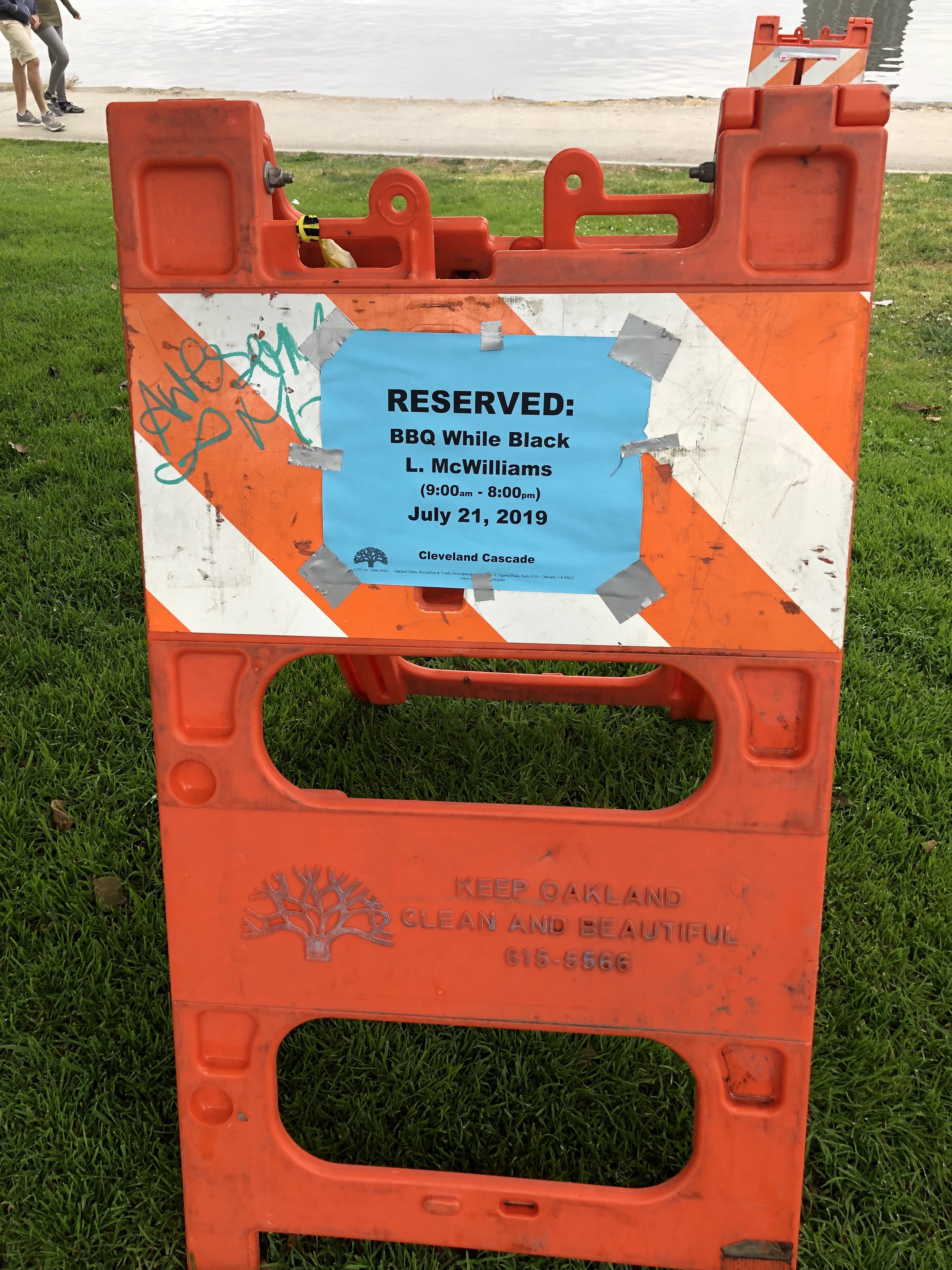
Oakland Echoes:
Reimagining and Reclaiming the Black City (under contract with
the University of California Press)
In Oakland, California, Black resistance has laid the foundation for movements and formations that reclaim space through public cultures, electoral and grassroots politics, and in the aesthetics of everyday life. Oakland Echoes: Reimagining and Reclaiming the Black City, explores and highlights the roots and routes of this resistance and reclamation, not only as a response to urban gentrification and related economic policies, but also as a quest to think about the past, present, and future of a Black city. Ultimately, the book argues that Black Oaklanders use a myriad of symbolic and material means – activism, consumption, recovery, escape, and adaptation – to reimagine and reclaim the Black city.
Oakland, like many other cities with large, but dwindling Black populations, has experienced a continuing legacy of destructive urban policies leveraged by federal, state, and local governments that forcefully evict economically disadvantaged communities, treating them as disposable, impoverished urban dwellers. The mobility of Black residents in Oakland, either by choice or force, resembles distinct patterns of re-segregation. Policy is what has driven the cyclical destruction of Black spaces, relying on the state to solve the problems they created. I’m ultimately asking, what does it mean for Black people to have the same experience over and over again? In other words, what does it mean for Black people to live through constant cycles of movement, containment, dispossession, and erasure? How can we imagine various forms of displacement and emplacement alongside the mechanisms (policies) that attempt to keep Black people in place? How can we recast what’s already been done in a new light? This project is asking us to view from a different perspective, a different lens, in order to consider what work is already being accomplished by the people who have been most affected. Oakland Echoes details the critical histories, conflicts, and struggles over how to use the city, who belongs to the city, and most importantly, who makes the city.
This book does not offer a seamless or neat history of Black Oakland. It resists the idea of presenting a positive/negative story about Black life here. Instead, I highlight the complex politics, identities, struggles, joys that have made it such a difficult place to write about. How does one hold together all of the contradictions and complexities that make this medium-sized, extraordinarily ordinary city survive?
In Oakland, California, Black resistance has laid the foundation for movements and formations that reclaim space through public cultures, electoral and grassroots politics, and in the aesthetics of everyday life. Oakland Echoes: Reimagining and Reclaiming the Black City, explores and highlights the roots and routes of this resistance and reclamation, not only as a response to urban gentrification and related economic policies, but also as a quest to think about the past, present, and future of a Black city. Ultimately, the book argues that Black Oaklanders use a myriad of symbolic and material means – activism, consumption, recovery, escape, and adaptation – to reimagine and reclaim the Black city.
Oakland, like many other cities with large, but dwindling Black populations, has experienced a continuing legacy of destructive urban policies leveraged by federal, state, and local governments that forcefully evict economically disadvantaged communities, treating them as disposable, impoverished urban dwellers. The mobility of Black residents in Oakland, either by choice or force, resembles distinct patterns of re-segregation. Policy is what has driven the cyclical destruction of Black spaces, relying on the state to solve the problems they created. I’m ultimately asking, what does it mean for Black people to have the same experience over and over again? In other words, what does it mean for Black people to live through constant cycles of movement, containment, dispossession, and erasure? How can we imagine various forms of displacement and emplacement alongside the mechanisms (policies) that attempt to keep Black people in place? How can we recast what’s already been done in a new light? This project is asking us to view from a different perspective, a different lens, in order to consider what work is already being accomplished by the people who have been most affected. Oakland Echoes details the critical histories, conflicts, and struggles over how to use the city, who belongs to the city, and most importantly, who makes the city.
This book does not offer a seamless or neat history of Black Oakland. It resists the idea of presenting a positive/negative story about Black life here. Instead, I highlight the complex politics, identities, struggles, joys that have made it such a difficult place to write about. How does one hold together all of the contradictions and complexities that make this medium-sized, extraordinarily ordinary city survive?
⎯⎯Publications⎯⎯
Academic articles, essays, and book chapters
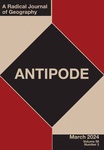
“Speculative Urban Worldmaking: Meeting Financial Violence with a Politics of Collective Care” - w/ Desiree Fields Antipode (November 2022) DOI: https://doi-org.libproxy.berkeley.edu/10.1111/anti.12900
This article brings Black feminist thought to bear on the urban geography of racialised financial violence. Our analysis focuses on the Moms 4 Housing movement, which began when five Black mothers occupied a vacant, corporate investor-owned house in West Oakland to protest how real estate speculation is fuelling displacement and homelessness for Black Oakland residents, disrupting care at the scale of the home and community. In taking space through recuperating the house on Magnolia Street, the Moms insist on housing as a site of care central to the survival of Black families and reclaim Oakland as a Black geographic space. In claiming ownership based on relations of care while refusing the institution of private property, we argue the Moms engage in speculative urban worldmaking—a form of collective care and a praxis of providing an alternative present that imagines and advocates for urban futures beyond financialisation's abstract racial violence.
This article brings Black feminist thought to bear on the urban geography of racialised financial violence. Our analysis focuses on the Moms 4 Housing movement, which began when five Black mothers occupied a vacant, corporate investor-owned house in West Oakland to protest how real estate speculation is fuelling displacement and homelessness for Black Oakland residents, disrupting care at the scale of the home and community. In taking space through recuperating the house on Magnolia Street, the Moms insist on housing as a site of care central to the survival of Black families and reclaim Oakland as a Black geographic space. In claiming ownership based on relations of care while refusing the institution of private property, we argue the Moms engage in speculative urban worldmaking—a form of collective care and a praxis of providing an alternative present that imagines and advocates for urban futures beyond financialisation's abstract racial violence.
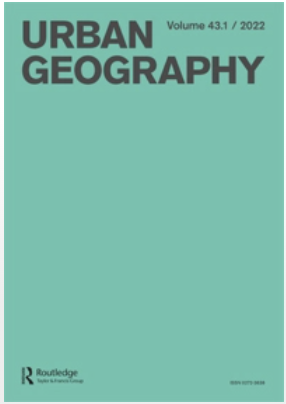
“Black Insurgent Aesthetics and the Public Imaginary”
Urban Geography (April 2022) DOI: 10.1080/02723638.2022.2049084
In this article, I analyze the spontaneous production of graffiti art and murals covering the entrances of businesses in the central business district of Oakland, CA, in the wake of the global protest movements, in 2020, against state violence and systemic racism. I argue that the art made legible what gets hidden through the violent processes of gentrification, neoliberal urbanism, and displacement/dispossession. The paper rethinks what borders, policing, and reclamation mean in a time of economic instability and a global health crisis, through the placement of these vernacular expressions in Downtown Oakland.
In this article, I analyze the spontaneous production of graffiti art and murals covering the entrances of businesses in the central business district of Oakland, CA, in the wake of the global protest movements, in 2020, against state violence and systemic racism. I argue that the art made legible what gets hidden through the violent processes of gentrification, neoliberal urbanism, and displacement/dispossession. The paper rethinks what borders, policing, and reclamation mean in a time of economic instability and a global health crisis, through the placement of these vernacular expressions in Downtown Oakland.
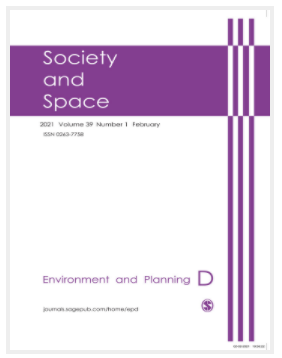
“Reclaiming the Chocolate City: Soundscapes of Gentrification and Resistance in Washington, D.C.”
Environment and Planning D: Society & Space 39:1 (February 2021)
In this article, I analyze the #DontMuteDC movement and show how Black people challenge the processes of gentrification by reclaiming space and resisting capitalist dispossession through cultural production. I analyze the movement’s emphasis on go-go music as part of a process to (re)claim their place in the city, which I argue disrupts structures governing and managing normative space. I propose reclamation aesthetics as an analytic through which we can understand Black cultural production and Black place- and space-making practices as responses to socio-spatial inequities.
Environment and Planning D: Society & Space 39:1 (February 2021)
In this article, I analyze the #DontMuteDC movement and show how Black people challenge the processes of gentrification by reclaiming space and resisting capitalist dispossession through cultural production. I analyze the movement’s emphasis on go-go music as part of a process to (re)claim their place in the city, which I argue disrupts structures governing and managing normative space. I propose reclamation aesthetics as an analytic through which we can understand Black cultural production and Black place- and space-making practices as responses to socio-spatial inequities.
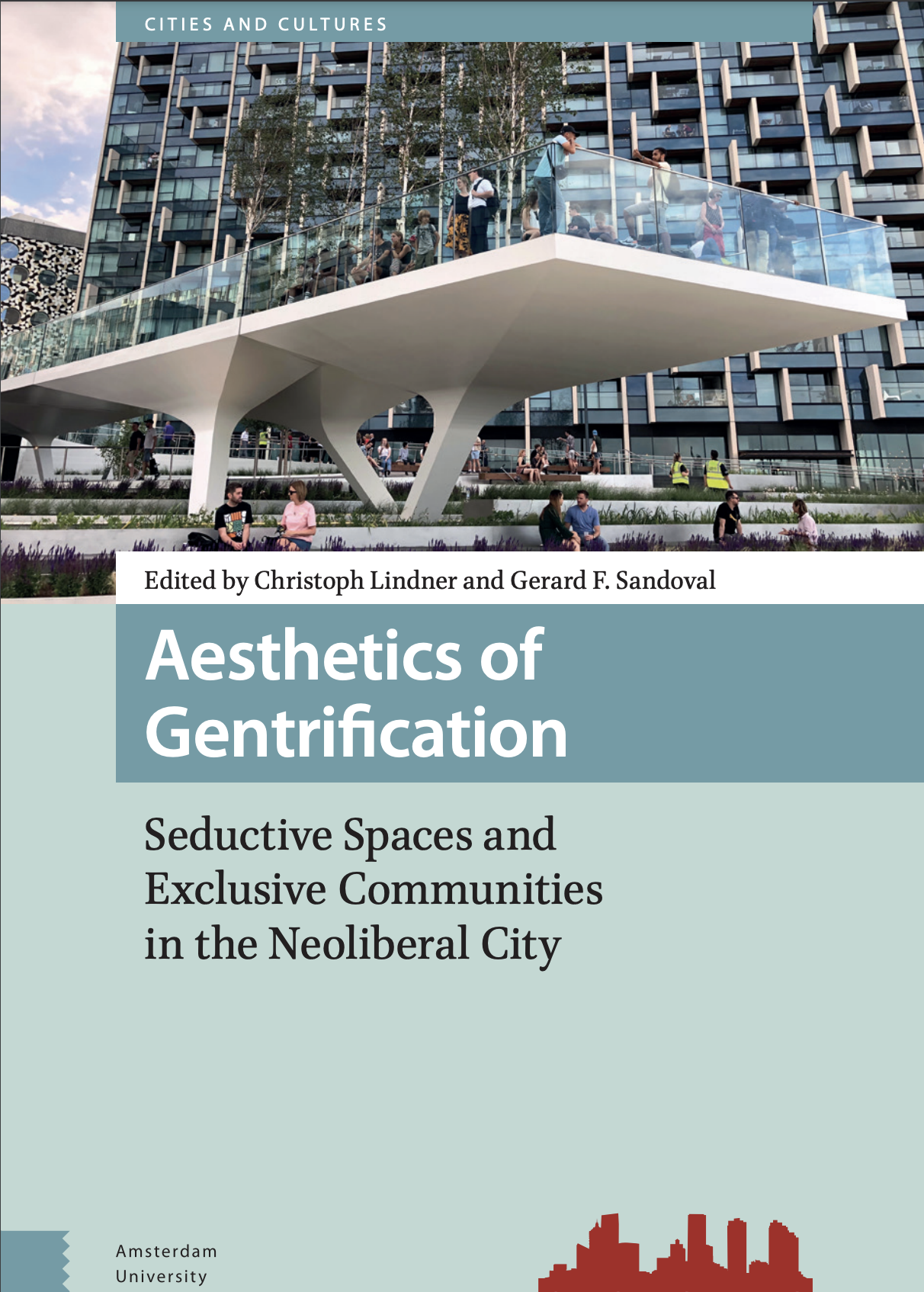
“Race, Authenticity, and the Gentrified Aesthetics of Belonging in Washington, DC”
Aesthetics of Gentrification: Seductive Spaces and Exclusive Communities in the Neoliberal City (Amesterdam University Press, 2021)
In this chapter, I examine representations of blackness and diversity and analyze how they are deployed in the pursuit of authenticity in the gentrified city. A vital component of understanding how blackness figures into the “revitalization” of the H Street corridor, in NE Washington, DC, is how culture and authenticity work as instruments of urban development. Given the prominence of culture as a key resource for post-industrial cities to attract tourists and residents, several have implemented strategies to promote urban branding. Racialized expressions are more marketable in the emerging “creative city” that emphasizes cultural consumption and creative, aesthetic practices. Creating authenticity is an integral process to the socio-spatial organization of gentrifying cities. I track the contemporary convergence of hipster aesthetics with a Black cultural space that results in the aesthetic re-coding of the neighbourhood as a diverse commercial corridor.
In this chapter, I examine representations of blackness and diversity and analyze how they are deployed in the pursuit of authenticity in the gentrified city. A vital component of understanding how blackness figures into the “revitalization” of the H Street corridor, in NE Washington, DC, is how culture and authenticity work as instruments of urban development. Given the prominence of culture as a key resource for post-industrial cities to attract tourists and residents, several have implemented strategies to promote urban branding. Racialized expressions are more marketable in the emerging “creative city” that emphasizes cultural consumption and creative, aesthetic practices. Creating authenticity is an integral process to the socio-spatial organization of gentrifying cities. I track the contemporary convergence of hipster aesthetics with a Black cultural space that results in the aesthetic re-coding of the neighbourhood as a diverse commercial corridor.
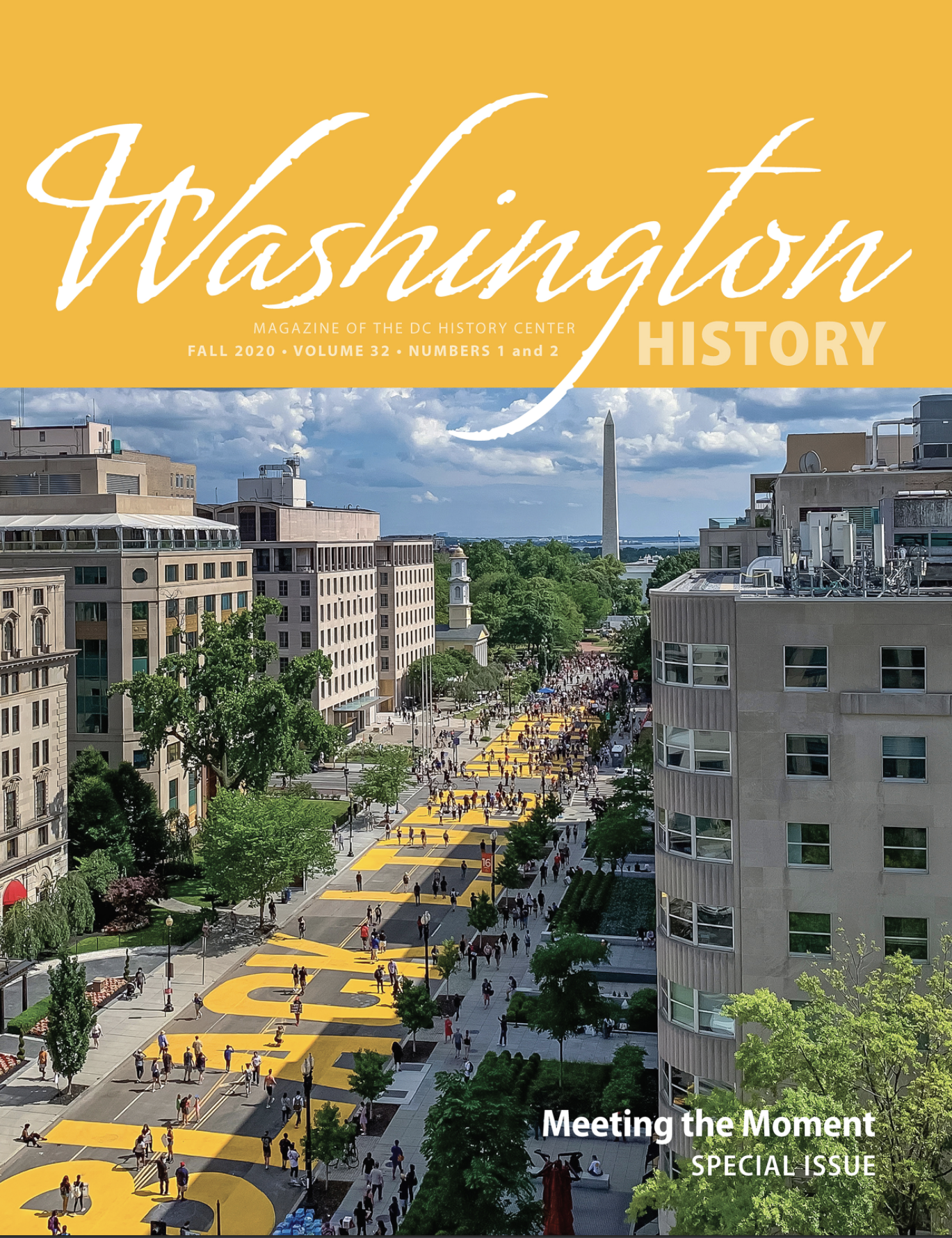
“The Chocolate State”
Washington History 32:1/2 (Fall 2020)
Essay appears in a special issue titled, “Meeting the Moment: Commentary on 2020.” In it, I consider the stakes of DC statehood in the context of a social, economic, and political crisis, as the US grapples with the question of how Black Lives Matter. More specifically, I address the possibilities of the “Chocolate City” becoming the “Chocolate State.”
Washington History 32:1/2 (Fall 2020)
Essay appears in a special issue titled, “Meeting the Moment: Commentary on 2020.” In it, I consider the stakes of DC statehood in the context of a social, economic, and political crisis, as the US grapples with the question of how Black Lives Matter. More specifically, I address the possibilities of the “Chocolate City” becoming the “Chocolate State.”

“Fear and Loathing (of Others): Race, Class, and
Contestation of Space in Washington, D.C.”
International Journal of Urban and Regional Research 43:6 (November 2019)
This article, written with Kathryn Howell, explores the cultural politics of public space and the placemaking politics of urban redevelopment in the Atlas District of Washington, DC, a popular commercial district undergoing rapid gentrification. The article focuses on uses of public space and describes how various forms of power are linked to the control of space in the context of gentrification. Our analysis focuses on designated public space in the Atlas District––the Starburst Plaza. By analyzing everyday practices around community control at the Starburst Plaza, this case study focuses on the discrete methods by which the symbolic and material inequities promulgated by the neoliberal state are reconfigured through struggles to define and manage contested public spaces.
International Journal of Urban and Regional Research 43:6 (November 2019)
This article, written with Kathryn Howell, explores the cultural politics of public space and the placemaking politics of urban redevelopment in the Atlas District of Washington, DC, a popular commercial district undergoing rapid gentrification. The article focuses on uses of public space and describes how various forms of power are linked to the control of space in the context of gentrification. Our analysis focuses on designated public space in the Atlas District––the Starburst Plaza. By analyzing everyday practices around community control at the Starburst Plaza, this case study focuses on the discrete methods by which the symbolic and material inequities promulgated by the neoliberal state are reconfigured through struggles to define and manage contested public spaces.
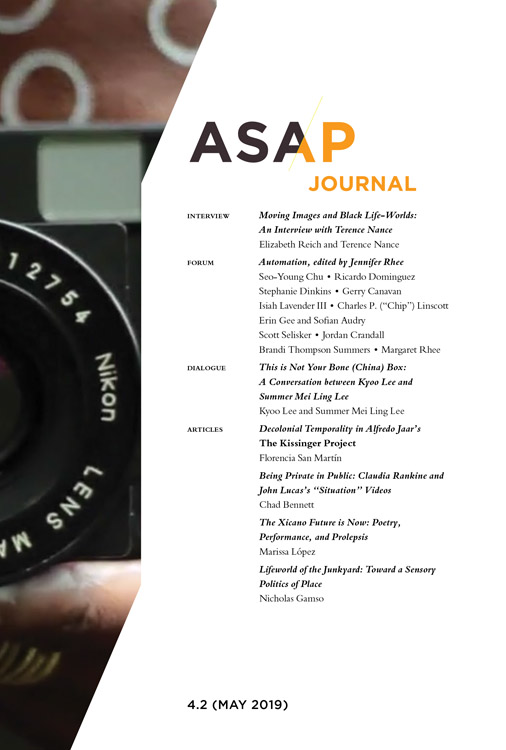
“Post-Apocalyptic
Shine in the Afro-Future.”
ASAP/Journal 4:2 (May 2019)
This solicited essay appears in a special issue dedicated to automation. It draws on conceptions of blackness, visuality, and resistance aesthetics in relation to a post-apocalyptic editorial spread of Rihanna in W magazine. I theorize excess shine as an adaptation for the Afro-future.
ASAP/Journal 4:2 (May 2019)
This solicited essay appears in a special issue dedicated to automation. It draws on conceptions of blackness, visuality, and resistance aesthetics in relation to a post-apocalyptic editorial spread of Rihanna in W magazine. I theorize excess shine as an adaptation for the Afro-future.
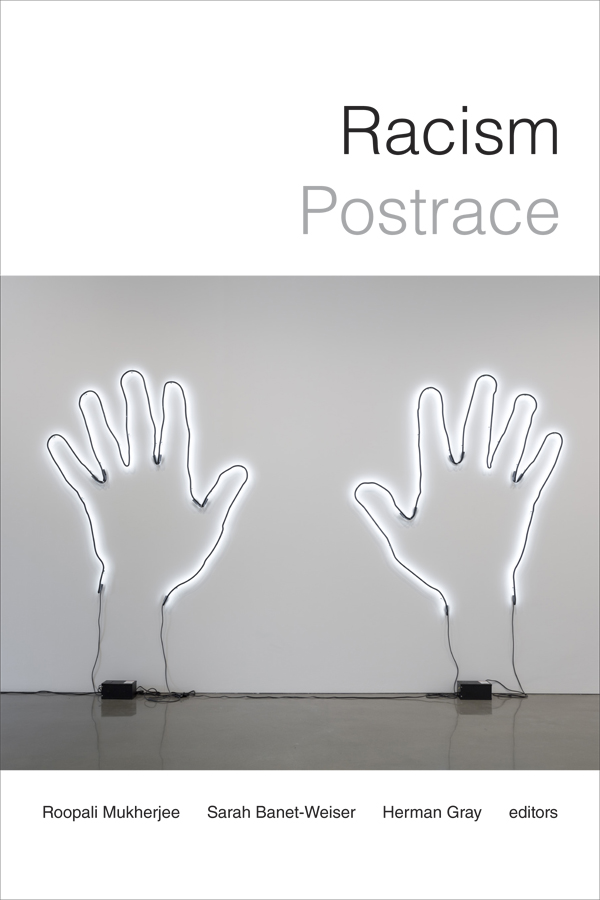
“Haute
(Ghetto) Mess”: Post-Racial Aesthetics and the Seduction of Blackness in High
Fashion.”
In Racism Post-Race: Culture, Critique, and the
Color Line, edited by Herman Gray, Sarah Banet-Weiser, and Roopali
Mukherjee (Duke University Press, 2019)
This chapter analyzes the “Haute Mess” editorial in the March 2012 issue of Vogue Italia to demonstrate that “hyperblackness” does not only require the presentation of blackness in bodily form, but it can also reference symbolic renderings of blackness – without being named as such. Through my textual/image analysis, the piece foregrounds the value of diversity in the fashion industry and the structuring logic of race-neutrality in its presentation of blackness as style. I argue that race is both made and un-made in fashion on the one hand through the production/performance of difference, and on the other hand through the flattening of difference where difference generates cultural and economic value via consumption and celebration. Finally, I consider blackness as an aesthetic that can be attached to black bodies, but is also present in objects, performances, language, etc. I investigate the deployment of blackness as the result of a historically situated aesthetic formation.
This chapter analyzes the “Haute Mess” editorial in the March 2012 issue of Vogue Italia to demonstrate that “hyperblackness” does not only require the presentation of blackness in bodily form, but it can also reference symbolic renderings of blackness – without being named as such. Through my textual/image analysis, the piece foregrounds the value of diversity in the fashion industry and the structuring logic of race-neutrality in its presentation of blackness as style. I argue that race is both made and un-made in fashion on the one hand through the production/performance of difference, and on the other hand through the flattening of difference where difference generates cultural and economic value via consumption and celebration. Finally, I consider blackness as an aesthetic that can be attached to black bodies, but is also present in objects, performances, language, etc. I investigate the deployment of blackness as the result of a historically situated aesthetic formation.
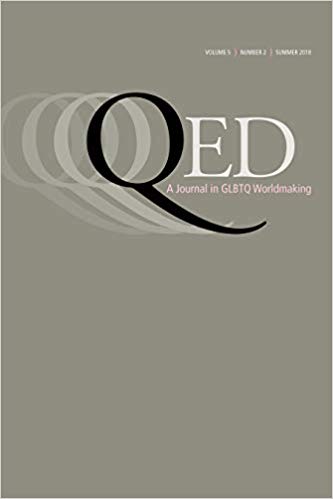
“Race as
Aesthetic: The Politics of Vision, Visibility, and Visuality in Vogue Italia’s ‘A Black Issue.’”
QED: A Journal of GLBTQ
Worldmaking 4:3
(Fall 2017)
This article highlights the construction of black bodies as valuable in the fashion system as a mark of difference and evidence of diversity. Here, I also render the high fashion industry as a site of conflicting elements concerning the deployment and meaning of the black female body. To do so, I use a combined analysis of activism in the fashion industry, which calls for the representation of black models through the visible inclusion of more black bodies on the runway and in magazines, and a textual/image analysis of the July 2008 issue of Vogue Italia, “A Black Issue.” I argue that representations of the black models in the Vogue Italia Black Issue present the “glamorous” black model’s body as unthreatening, alluring, and integrated into dominant discourses of feminine attractiveness. I draw from the presentation of images in the high fashion industry to highlight instances when blackness is asked to prove a post-race and post-racist reality. I argue that the presentation of black bodies becomes less about their blackness, and more about their ability to sell a marketable black aesthetic.
This article highlights the construction of black bodies as valuable in the fashion system as a mark of difference and evidence of diversity. Here, I also render the high fashion industry as a site of conflicting elements concerning the deployment and meaning of the black female body. To do so, I use a combined analysis of activism in the fashion industry, which calls for the representation of black models through the visible inclusion of more black bodies on the runway and in magazines, and a textual/image analysis of the July 2008 issue of Vogue Italia, “A Black Issue.” I argue that representations of the black models in the Vogue Italia Black Issue present the “glamorous” black model’s body as unthreatening, alluring, and integrated into dominant discourses of feminine attractiveness. I draw from the presentation of images in the high fashion industry to highlight instances when blackness is asked to prove a post-race and post-racist reality. I argue that the presentation of black bodies becomes less about their blackness, and more about their ability to sell a marketable black aesthetic.

“H
Street, Main Street and the Neoliberal Aesthetics of Cool.”
In Capital Dilemma: Growth and Inequality in
Washington, DC, edited by Derek Hyra and Sabiyha Prince (Routledge, 2015)
This chapter argues that the category of diversity has performed subtle, yet significant discursive work in the development of a popular, gentrifying commercial district in Washington, D.C. I highlight the relationship between race, diversity, belonging and urban development in the historical devaluation of the H Street commercial corridor, as a Black space, and its revaluation as an emerging multicultural neighborhood. I also explore how discourses of diversity and neoliberalism shape what hand who are deemed un/desirable and I identify how these discourses legitimate practices of racial inequality without naming race. By using diversity to map the space, I argue that the development of H Street places emphasis on a specific ideology of difference as multiculturalism and diversity in the spread of neoliberalism.
This chapter argues that the category of diversity has performed subtle, yet significant discursive work in the development of a popular, gentrifying commercial district in Washington, D.C. I highlight the relationship between race, diversity, belonging and urban development in the historical devaluation of the H Street commercial corridor, as a Black space, and its revaluation as an emerging multicultural neighborhood. I also explore how discourses of diversity and neoliberalism shape what hand who are deemed un/desirable and I identify how these discourses legitimate practices of racial inequality without naming race. By using diversity to map the space, I argue that the development of H Street places emphasis on a specific ideology of difference as multiculturalism and diversity in the spread of neoliberalism.
⎯⎯Public Writing⎯⎯
Public scholarship and academic essays written for a general audience

“Untimely Futures”
Places Journal (November 9, 2021)
This essay explores the history of unhoused populations in Oakland, the cyclical displacements of Black locals, and the appearance and reappearance of parking lots in these stories of disruption. She draws on the speculative to highlight a long history of restrictive and devastating policy passed and promoted by local governments and developers.
Places Journal (November 9, 2021)
This essay explores the history of unhoused populations in Oakland, the cyclical displacements of Black locals, and the appearance and reappearance of parking lots in these stories of disruption. She draws on the speculative to highlight a long history of restrictive and devastating policy passed and promoted by local governments and developers.
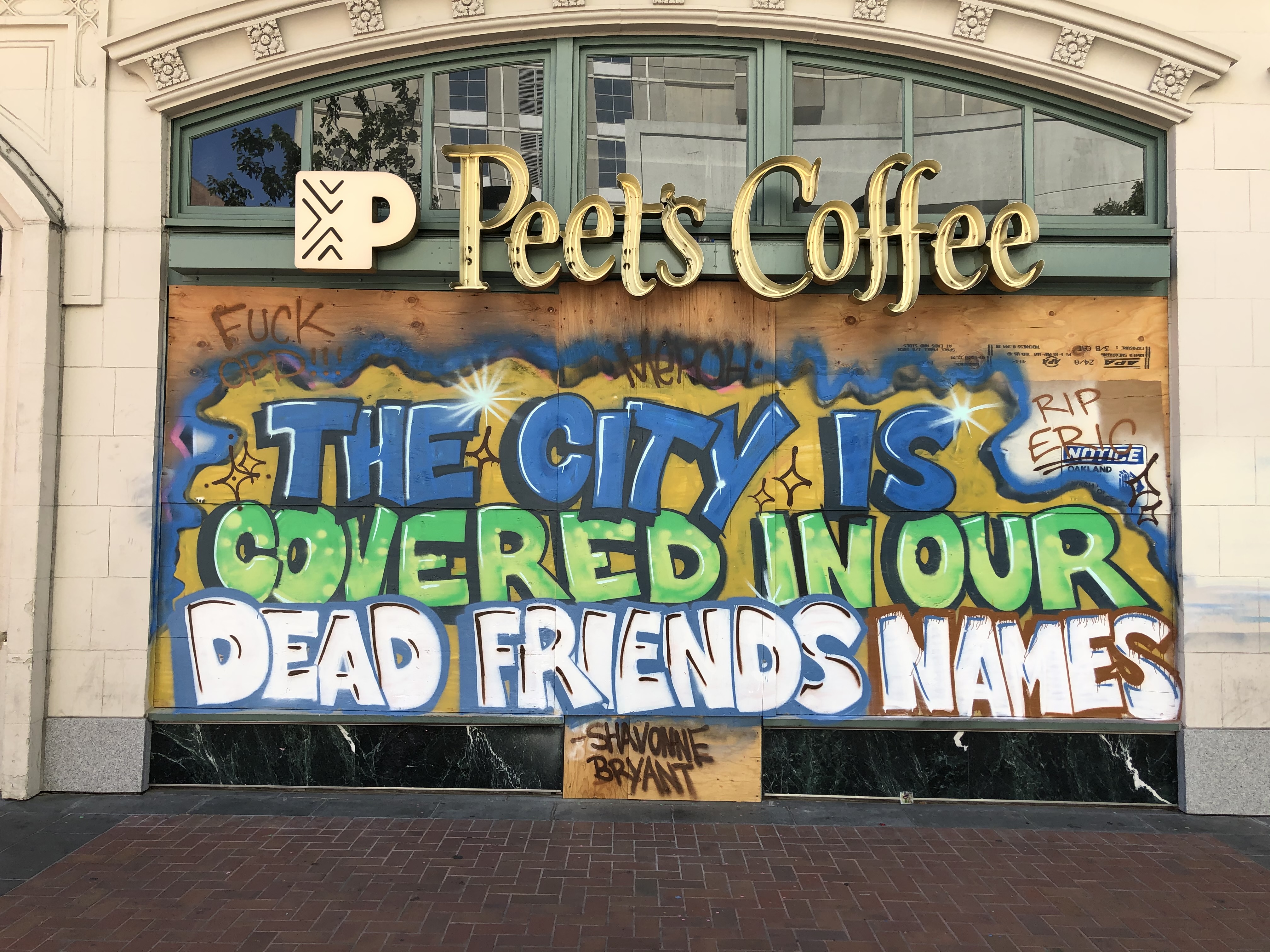
“Aesthetic Activism and the Quest for Authenticity in a Time of Crisis”
Mediapolis (June 12, 2021)
This solicited essay contributes to a roundtable on the topic of “lockdown aesthetics and gentrification.” My essay focuses on how the aesthetics of blackness have been co-opted in the gentrifying city during a period of crisis.
Mediapolis (June 12, 2021)
This solicited essay contributes to a roundtable on the topic of “lockdown aesthetics and gentrification.” My essay focuses on how the aesthetics of blackness have been co-opted in the gentrifying city during a period of crisis.
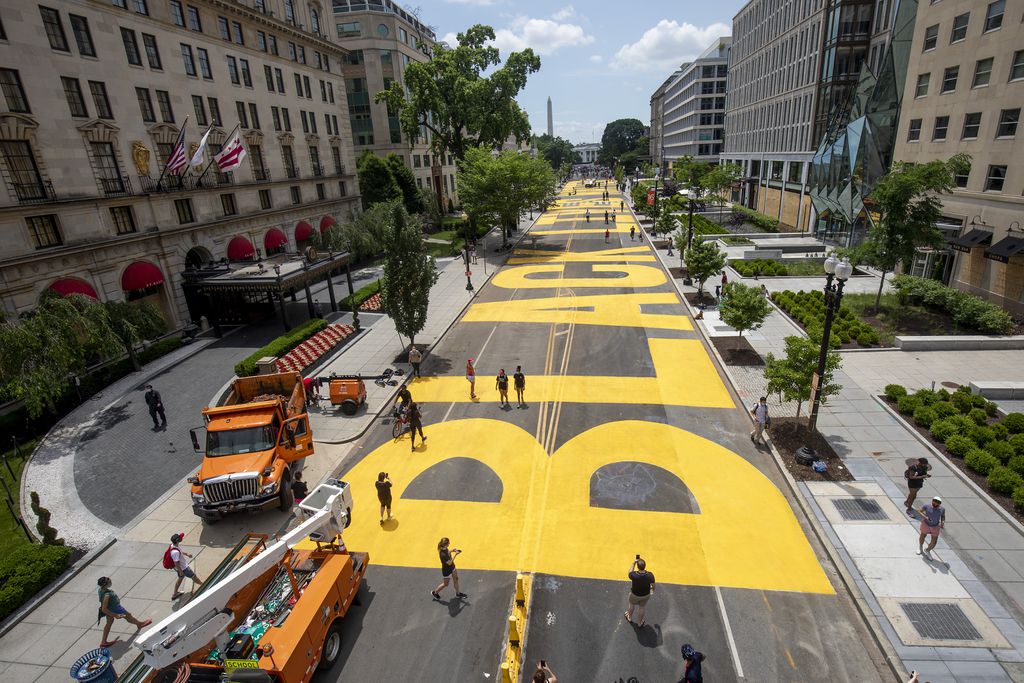
“We Need Action to Accompany Art”
The Boston Globe (June 11, 2020)
This solicited op-ed offers a critical lens to view state-sanctioned public art as “black aesthetic emplacement.”
This solicited op-ed offers a critical lens to view state-sanctioned public art as “black aesthetic emplacement.”

“Race and the Quarantined City/What Black America Knows About Quarantine”
The New York Times (May 15, 2020)
This solicited op-ed discusses the long history of Black spatial containment and marginalization in the wake of the COVID-19 pandemic.
This solicited op-ed discusses the long history of Black spatial containment and marginalization in the wake of the COVID-19 pandemic.

“Crafting Selves: Elia Alba’s Supper Club and the Politics of Home(place)” In The Supper Club: by Elia Alba, edited by Sara Reisman, George Bolster, and Anjuli Nanda (Hirmer Publishers, 2019)
This chapter explore the role of blackness, aesthetics, and black representation in Elia Alba’s art practice. The essay draws on bell hooks’ essay “Homeplace: A Site of Resistance,” to imagine Alba’s Supper Club as a radically subversive environment.
This chapter explore the role of blackness, aesthetics, and black representation in Elia Alba’s art practice. The essay draws on bell hooks’ essay “Homeplace: A Site of Resistance,” to imagine Alba’s Supper Club as a radically subversive environment.
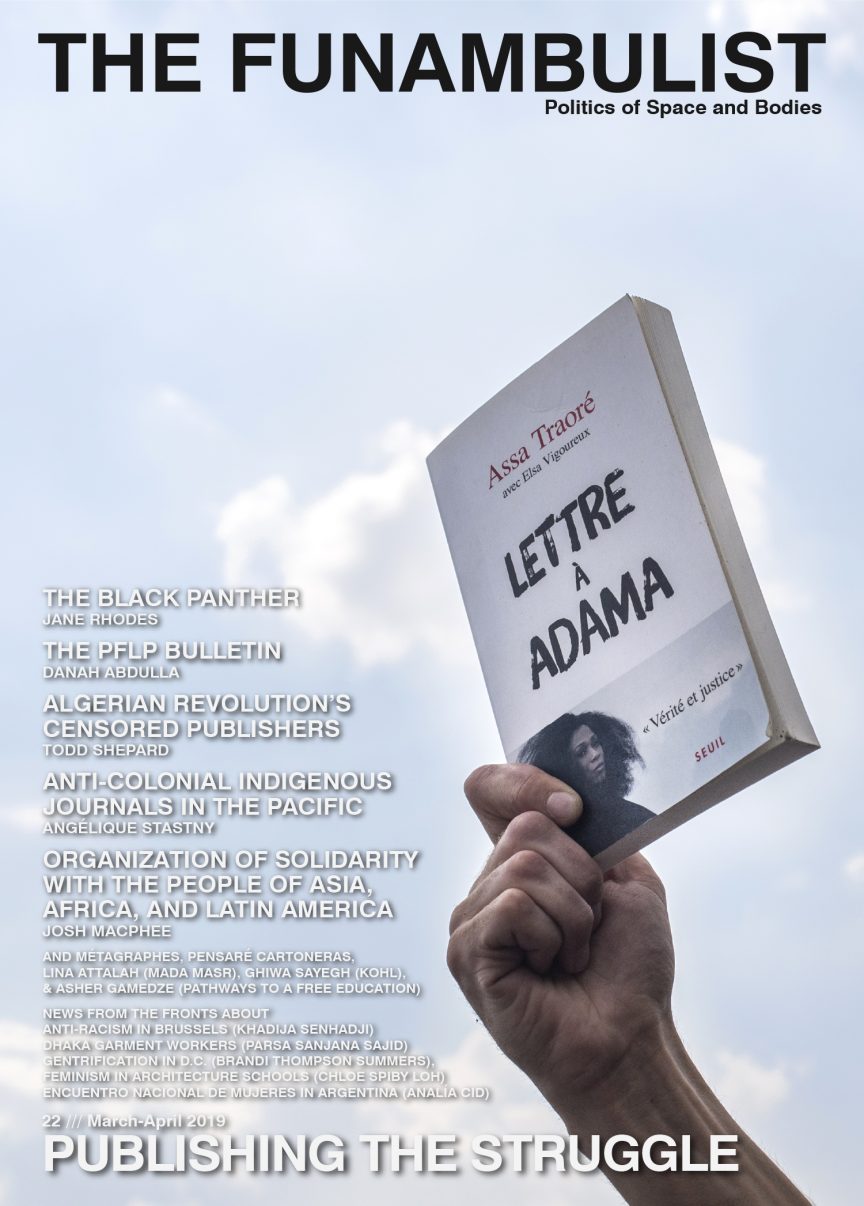
“‘Housing is a Natural Right, Not a Privilege’:
Anti-Gentrification Activism in a Chocolate City”
The Funambulist, Issue 22 (March 2019)
This solicited essay discusses the Black struggle against gentrification in Washington, D.C., and various organizations, initiatives, policy, and ongoing cultural activities that address the socio-spatial shift in D.C.’s landscape, primarily due to gentrification-induced displacement and dispossession.
The Funambulist, Issue 22 (March 2019)
This solicited essay discusses the Black struggle against gentrification in Washington, D.C., and various organizations, initiatives, policy, and ongoing cultural activities that address the socio-spatial shift in D.C.’s landscape, primarily due to gentrification-induced displacement and dispossession.
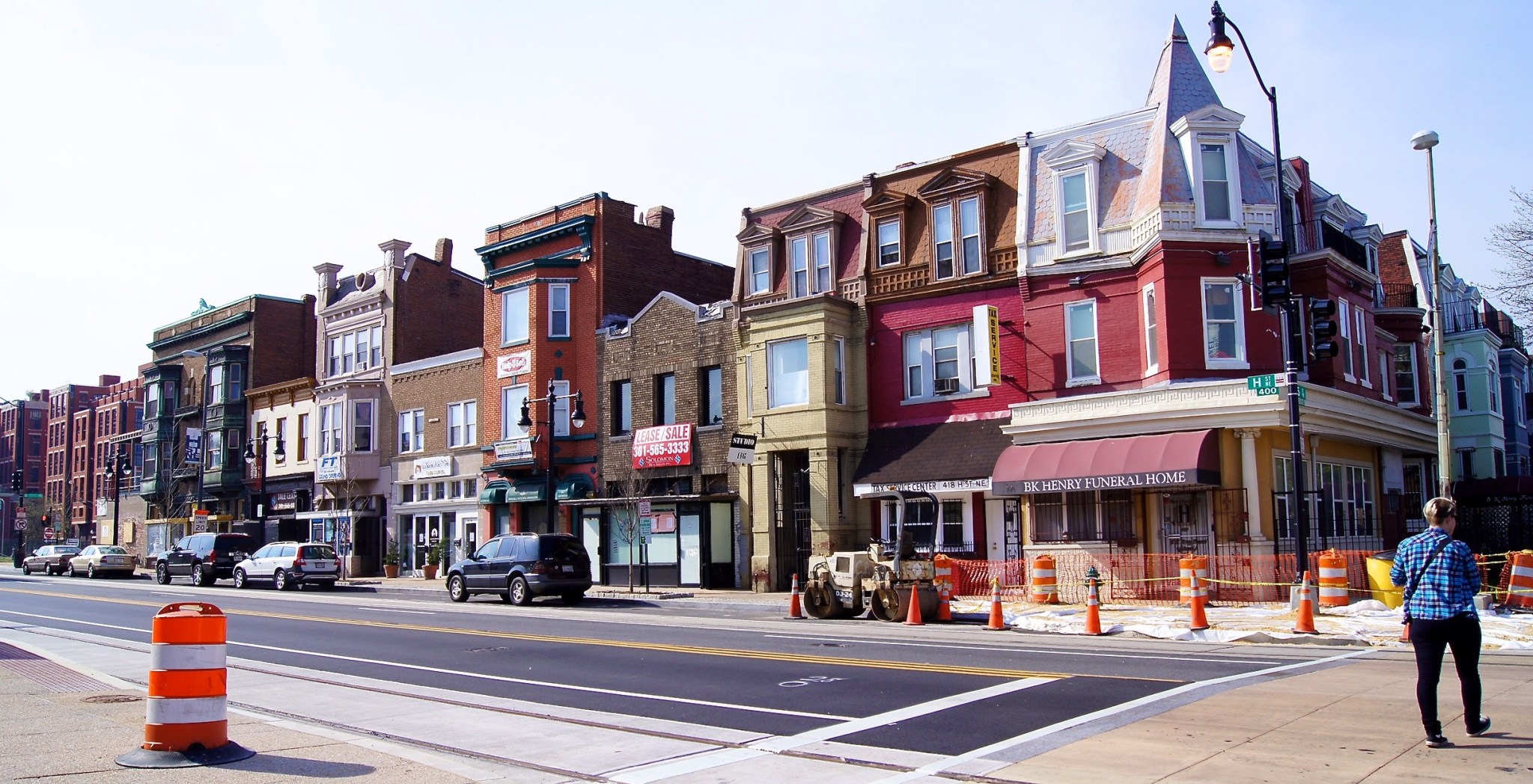

Black Aesthetic/Aesthetic Black: Race, Space, and the
Possibilities of Becoming
Public Seminar (May 2018)
This solicited piece discusses the productivity of blackness, and the mutual constitution of “black aesthetics” and “blackness as an aesthetic.”
Public Seminar (May 2018)
This solicited piece discusses the productivity of blackness, and the mutual constitution of “black aesthetics” and “blackness as an aesthetic.”


“Black Lives Under Surveillance”
Public Books (December 2016)
A review essay on Simone Browne’s Dark Matters: On the Surveillance of Blackness and Keeanga-Yamhatta Taylor’s From #BlackLivesMatter to Black Liberation that draws connections between race, surveillance, and capitalism.
Public Books (December 2016)
A review essay on Simone Browne’s Dark Matters: On the Surveillance of Blackness and Keeanga-Yamhatta Taylor’s From #BlackLivesMatter to Black Liberation that draws connections between race, surveillance, and capitalism.